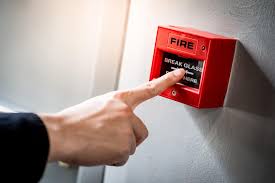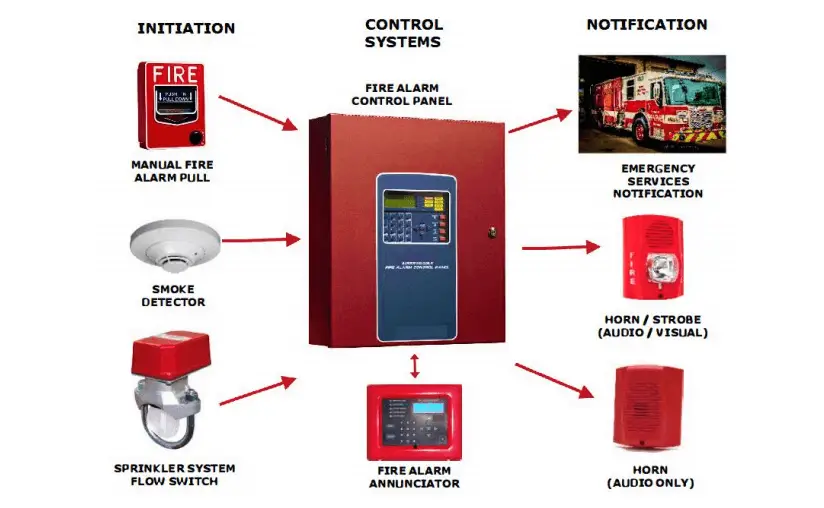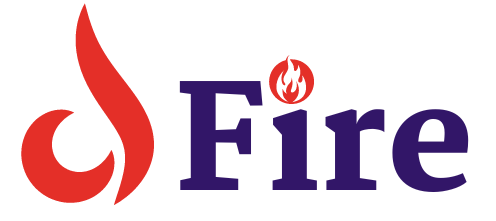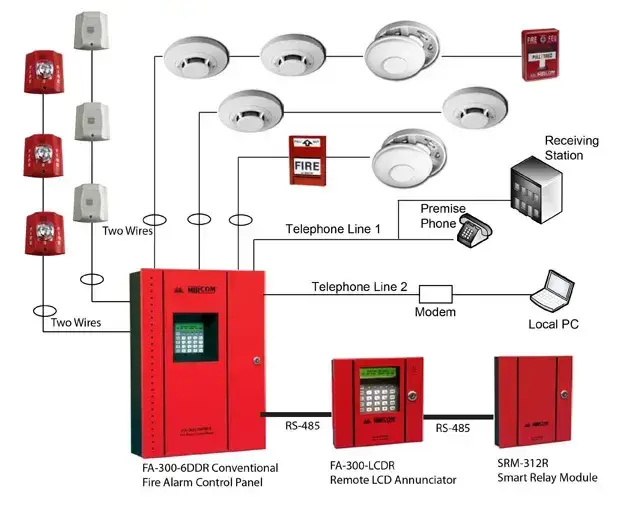Fire Alarm Control Panel (FACP) is a central unit that monitors and controls fire alarm systems. It detects fires and initiates alerts.
A Fire Alarm Control Panel is crucial for building safety. It continuously monitors sensors for smoke, heat, or other fire indicators. Upon detection, it triggers alarms and alerts occupants and emergency services. Fire Alarm Control Panels are essential in commercial, residential, and industrial buildings.
They integrate with other safety systems, like sprinklers and emergency lighting. Modern panels offer features like touchscreens and remote access. Regular maintenance ensures they function correctly. Investing in a reliable Fire Alarm Control Panel FACP enhances overall safety and minimizes fire-related risks. Proper usage and understanding of Fire Alarm Control Panel FACPs can save lives and protect property.

Credit: automation forum.co
Introduction To Fire Alarm Control Panels

A Fire Alarm Control Panel (FACP) is crucial for building safety. It monitors and controls fire alarm systems. The FACP ensures early detection and alerting of fires. This helps in evacuating people quickly and safely.
Purpose And Importance
The primary purpose of a Fire Alarm Control Panel is to detect fires early. Early detection can save lives and property. The FACP alerts occupants and emergency services. It ensures timely evacuation and firefighting efforts.
The importance of FACPs cannot be overstated. They provide a centralized control point. This makes managing fire alarms efficient and effective. Fire safety relies heavily on these systems.
Basic Components
Fire Alarm Control Panels consist of several key components:
- Control Unit: The brain of the system.
- Initiating Devices: Smoke detectors and manual pull stations.
- Notification Appliances: Alarms, bells, and strobe lights.
- Power Supply: Ensures the system operates continuously.
- Communication Devices: Connects to emergency services.
The Control Unit processes signals from initiating devices. If a fire is detected, it activates notification appliances. These notify occupants and emergency responders.
Initiating Devices include smoke detectors and manual pull stations. Smoke detectors sense smoke and send a signal to the FACP. Manual pull stations allow people to activate the alarm manually.
Notification Appliances alert people to evacuate. They include alarms, bells, and strobe lights. These devices ensure everyone is aware of the fire emergency.
The Power Supply ensures the FACP operates continuously. It includes batteries and a connection to the building’s power. This redundancy ensures the system works during power outages.
Communication Devices connect the FACP to emergency services. They ensure timely response from firefighters and other emergency personnel.
Types Of Fire Alarm Control Panels
Fire Alarm Control Panels are crucial for safety in buildings. They detect and alert you to fires. There are different types of these panels. Each type has unique features and benefits. Let’s explore the main types:
Conventional Panels
Conventional panels are the most basic type. They divide a building into zones. Each zone has its own detectors and call points.
- Simple to install
- Cost-effective
- Easy to maintain
They are ideal for small buildings. In case of fire, the panel shows the zone. This helps in quick response.
Addressable Panels
Addressable panels are more advanced. They offer precise detection.
- Each device has its address
- Provides detailed information
- Ideal for large buildings
They can pinpoint the exact location of a fire. This makes them more efficient. They also support complex systems. This includes integration with other safety systems.
| Feature | Conventional Panels | Addressable Panels |
|---|---|---|
| Installation | Simple | Complex |
| Cost | Low | High |
| Detection | Zone-based | Device-specific |
Choosing the right panel depends on your building’s needs. Always consider the size and complexity of your building.
How Fire Alarm Control Panels Work
A Fire Alarm Control Panel (FACP) is the brain of a fire alarm system. It monitors and controls the detection and notification devices. Understanding how it works is crucial for safety and security. Below, we explain the key processes involved in fire alarm control panels.
Detection And Activation
The FACP continuously monitors input devices like smoke detectors, heat detectors, and manual pull stations.
- Smoke Detectors: Detect smoke particles in the air.
- Heat Detectors: Sense a rapid increase in temperature.
- Manual Pull Stations: Allow people to activate the alarm manually.
When a detector senses a fire, it sends a signal to the FACP. The panel processes this signal and determines the appropriate response.
Notification Process
After detecting a potential fire, the FACP activates the notification devices.
- Alarms: Emit loud sounds to alert occupants.
- Strobes: Flash bright lights to signal danger, especially useful for the hearing impaired.
- Voice Evacuation Systems: Provide clear instructions to evacuate the building.
The FACP also sends alerts to emergency services. This ensures a quick response to the fire.
Fire Alarm Control Panels are essential for fire safety. They detect potential fires and alert people effectively. Understanding their operation can help ensure a safer environment.
Installation Requirements
Installing a Fire Alarm Control Panel (FACP) is crucial for safety. Proper installation ensures the system functions effectively. Below are key installation requirements:
Site Assessment
Before installation, conduct a thorough site assessment. Understand the building’s layout. Identify potential fire hazards. Determine the best locations for detectors and alarms. A detailed site assessment helps in planning the wiring routes and places of devices.
Compliance With Codes
Ensure the installation meets all local and national codes. Refer to the National Fire Protection Association (NFPA) guidelines. Follow the International Building Code (IBC) standards. Compliance guarantees the system is legally and technically sound.
| Code/Standard | Requirement |
|---|---|
| NFPA 72 | Fire Alarm and Signaling Code |
| IBC | Building Construction and Safety |
| Local Codes | Specific Regional Requirements |
Following these guidelines ensures a safe and compliant installation. Always consult with certified professionals during the process.
Maintenance And Testing
Fire Alarm Control Panels (FACP) are essential for safety. Regular maintenance and testing ensure they work perfectly. This section covers the key steps.
Regular Inspections
Regular inspections are crucial for the Fire Alarm Control Panel. These inspections help detect any issues early. A typical inspection checklist includes:
- Checking power supply
- Inspecting battery backup
- Testing alarm signals
- Verifying panel display
Inspect the panel every month. This keeps it in top condition. Keep a log of all inspections. This helps track the system’s health.
Troubleshooting Common Issues
Sometimes, the Fire Alarm Control Panel may show errors. Knowing common issues helps fix them quickly. Here are some common problems and solutions:
| Issue | Possible Cause | Solution |
|---|---|---|
| False Alarms | Dust in detectors | Clean detectors |
| No Power | Battery failure | Replace battery |
| Silent Alarm | Faulty sounder | Check and replace the sounder |
Keep a spare battery and spare parts handy. This ensures quick fixes. Train staff to handle basic troubleshooting. This minimizes downtime.
Integration With Other Systems
Integrating a Fire Alarm Control Panel (FACP) with other systems enhances building safety. This integration ensures swift responses during emergencies. Let’s explore how FACPs integrate with various systems.
Building Automation
FACPs can connect with building automation systems (BAS) for better control. This connection allows automatic adjustments in HVAC systems during a fire. For example, air ducts can close to prevent smoke spread. Elevators can be sent to the ground floor. This ensures people do not get trapped.
Here’s a quick overview:
| Automation Feature | Action During Fire |
|---|---|
| HVAC System | Shuts down or adjusts |
| Elevators | Sent to the ground floor |
| Lighting | Emergency lights turn on |
Emergency Response Coordination
FACPs play a key role in emergency response coordination. They can communicate with emergency services instantly. This helps in the quick dispatch of fire engines. FACPs can also notify building occupants. Alarms, voice messages, and flashing lights guide people to exits. This reduces panic and ensures orderly evacuation.
Benefits include:
- Quick response from fire departments
- Timely notifications to building occupants
- Clear guidance for safe evacuation
Effective coordination saves lives and minimizes damage.
Choosing The Right Fire Alarm Control Panel

Choosing the right fire alarm control panel is crucial for safety. The right panel ensures quick response during fire emergencies. Here are key factors to consider.
Factors To Consider
When selecting a fire alarm control panel, keep the following factors in mind:
- Type of Building: Residential or commercial buildings have different needs.
- Number of Zones: Identify how many zones the panel should cover.
- Compatibility: Ensure the panel works with existing alarm systems.
- Ease of Use: The panel should be user-friendly for quick operation.
- Compliance: Check if the panel meets local fire safety regulations.
Cost Vs. Benefits
Weighing the cost against the benefits is essential:
| Factor | Low-Cost Panels | High-Cost Panels |
|---|---|---|
| Initial Investment | Lower upfront cost | Higher upfront cost |
| Features | Basic features | Advanced features |
| Maintenance | May require frequent maintenance | Less frequent maintenance |
| Reliability | Basic reliability | High reliability |
Opt for a panel that balances cost and features. This ensures safety and efficiency.

Credit: getsafeandsound.com
Future Trends In Fire Alarm Technology
Fire alarm technology is rapidly evolving. Modern advancements are making systems smarter and more sustainable. These future trends will revolutionize fire safety.
Smart Systems
Smart fire alarm systems are the future of fire safety. They integrate with other smart devices. This allows for seamless communication and control.
- IoT Integration: Smart systems connect with the Internet of Things (IoT). This enhances monitoring and response capabilities.
- AI and Machine Learning: These technologies help in detecting patterns. They can predict and prevent potential fire hazards.
- Remote Access: Users can control and monitor their systems remotely. This adds convenience and ensures timely action.
Sustainable Solutions
Sustainability is crucial in modern fire alarm technology. Manufacturers are focusing on eco-friendly solutions. These systems aim to reduce environmental impact.
| Solution | Benefit |
|---|---|
| Energy-Efficient Devices | Lower power consumption and longer battery life. |
| Recyclable Materials | Reduced waste and environmental footprint. |
| Green Manufacturing Processes | Less pollution and resource usage. |
Future fire alarm systems will be smarter and more sustainable. These trends will make our homes and buildings safer and greener.

Credit: instrumentationtools.com
Frequently Asked Questions
What Is A Fire Alarm Control Panel?
A Fire Alarm Control Panel (FACP) is the central hub of a fire alarm system. It monitors and controls all the system’s components and alerts building occupants in case of fire.
How Does A Fire Alarm Control Panel Work?
A Fire Alarm Control Panel receives signals from sensors and detectors. When it detects smoke or heat, it triggers alarms and activates emergency protocols.
Why Is A Fire Alarm Control Panel Important?
A Fire Alarm Control Panel is crucial for early fire detection. It ensures timely evacuation and alerts emergency services, minimizing damage and saving lives.
What Are The Types Of Fire Alarm Control Panels?
There are two main types: conventional and addressable panels. Conventional panels monitor specific zones, while addressable panels provide detailed information about individual devices.
Conclusion
A Fire Alarm Control Panel is crucial for safety. It monitors and manages fire detection systems. Ensuring it functions properly can save lives. Regular maintenance is essential. Invest in a reliable system for peace of mind. Stay safe with a well-maintained fire alarm control panel.
Protect your property and loved ones effectively.

I’m Abdus Sobur, a highly skilled and professional Fire Safety Officer with a passion for safeguarding lives and property. Over the course of my career, I’ve conducted numerous successful fire safety audits, earning a reputation for excellence in ensuring public safety.
In addition to my role as a Fire Safety Officer, I’m also dedicated to raising awareness about the importance of fire safety. Through my blog, I share insights into the functions of different fire safety equipment, aiming to empower individuals with the knowledge they need to protect themselves and their communities.
I’m driven by a deep commitment to promoting fire safety awareness and preventing fire-related incidents.


